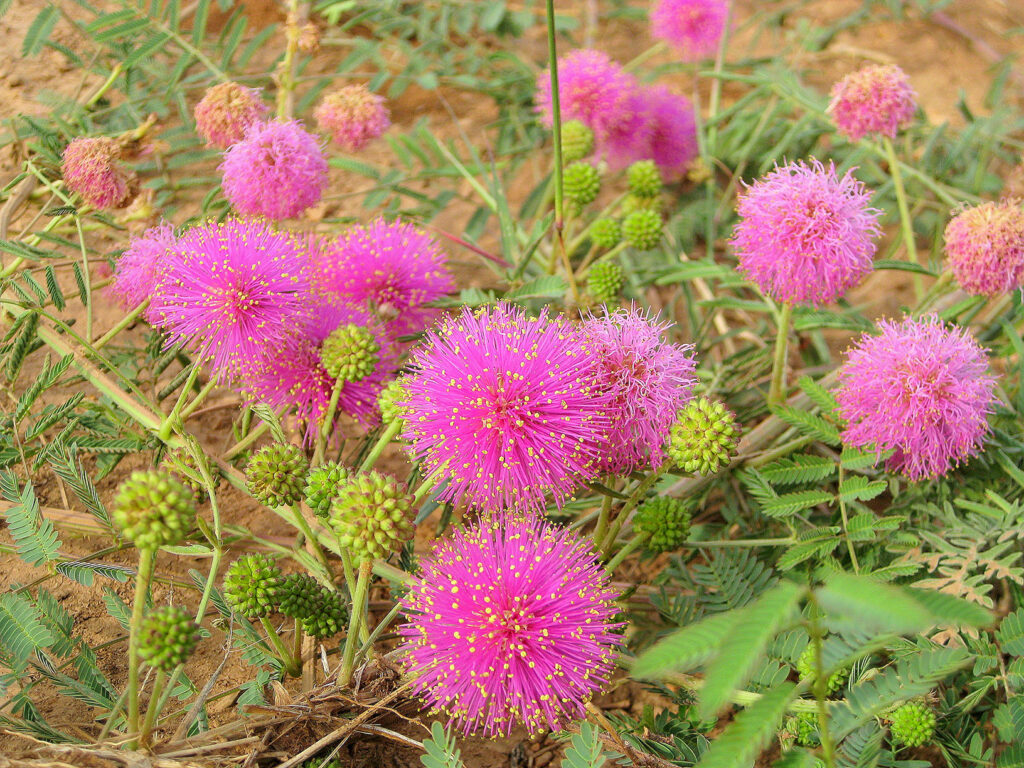If you haven’t been introduced to this tiny plant with fuzzy little pink flowers, you are missing out. It might not be much to look at, but sensitive briar does something pretty amazing. It moves. By itself. No, really.
Sensitive briar – Mimosa spp.
There are several species in the genus Mimosa that share the common name sensitive briar or sensitive plant. There are nearly 20 species in the central and southern U.S. alone. I saw one when visiting Puerto Rico this February as well (see my video at the end of this article).
Mimosa microphylla also known as the touch-me-not plant is one of these species that is found in many southeastern states including Mississippi, Louisiana, Alabama, Georgia, and Tennessee (see map here: https://plants.usda.gov/core/profile?symbol=mimi22). It is commonly known as eastern sensitive briar or littleleaf sensitive briar.
The leaves of these plants will fold up when touched or when something brushes up against it. It is pretty amazing to watch.
Most of the time, sensitive briar grows in rocky or sandy soil or in soil that is very well drained. It prefers full sun and dry conditions. The plants are very low to the ground have a trailing growth form.
As the common name implies, this plant has tiny briars or thorns running along their stems. So, if you do touch it, be cautious not to get stuck by a thorn.
The flowers of sensitive briar resemble tiny pink pompoms or fireworks. Any time I see these little flowers, I smile because it is one of my favorite native plants to share with kids. They watch in wonder at the reaction of the leaves. It’s a great tool to get kids interested in learning about native plants.
Why does sensitive briar close its leaves?
Scientists disagree about the exact reason or benefit of this plant closing its leaves, but it is thought to be a protective response – to avoid getting eaten. It also closes its leaves up on cloudy days and at night.
How does the sensitive briar close its leaves?
Thigmonasty. This mouthful of a word simply means “the response of a plant to touch or vibration.” The movement is fast and caused by a change in turgor pressure within the cells of the plant.
This cool video shows you exactly how this works:
Sensitive briar can learn too
Did you know that some plants can learn? A study by Homes and Gruenberg in 1965 discovered that Mimosa pudica learned to discriminate between different stimuli. In this case, the researchers stimulated the plant to close its leaves from a water droplet so many times that it became accustomed to the water droplet and eventually was no longer stimulated to close when the water dropped onto its leaves. However, it still closed its leaves when touched by a finger. Crazy!
In this study, the sensitive briar habituated to the water drops, making it no longer respond to the drop of a water. The plant learned to tell the difference between a drop of water hitting its leaves and a person touching it with his/her finger.
Wildlife benefits
Bobwhite quail and other birds will eat the seeds of this plant. Turkey and deer will forage on the leaves. Bees are attracted to the pollen.
So the next time you see tiny pink pompom flowers, look closely, find this little plant, and test out the reaction of its leaves to touch. Nature is amazing!

